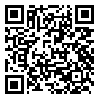BibTeX | RIS | EndNote | Medlars | ProCite | Reference Manager | RefWorks
Send citation to:
URL: http://jdm.tums.ac.ir/article-1-144-en.html
Background and Aim: Several agents were used for pulpotomy in primary molars. Formocresol is the most common drug in this procedure. In some studies it has been shown that, this material has potential some side effects, so it is essential to find other alternatives. The aim of this study was to evaluate clinical and radiographic success rates of mineral trioxide aggregate and formocresol.
Materials and Methods: In this randomized clinical trial study, 70 carious primary teeth of 4 to 7-year-old children were pulpotomized, and remaining pulp was dressed with Root MTA and formocresol. The clinical and radiographic follow up evaluations were performed at 6, 12 months by a blind dentist. The data were analyzed by Fisher's exact test.
Results: At the end of 1-year follow-up period, in formocresol group sinus tract and tenderness to percussion were seen in 2 teeth, internal resorption was seen in 1 tooth, and furcation radiolucency was seen in 2 teeth. Clinical and radiographic signs of failure were not seen in any case of (Iranian) Root MTA group.
Conclusion: Based on the results of this study, Iranian MTA can be used for pulpotomy in primary molars.
Received: 2009/01/9 | Accepted: 2009/06/18 | Published: 2013/10/2
| Rights and Permissions | |
 |
This work is licensed under a Creative Commons Attribution-NonCommercial 4.0 International License. |




